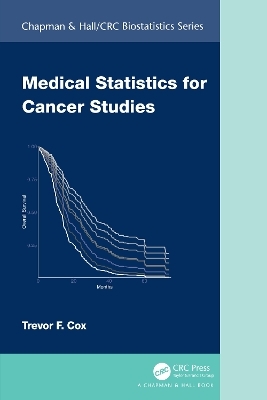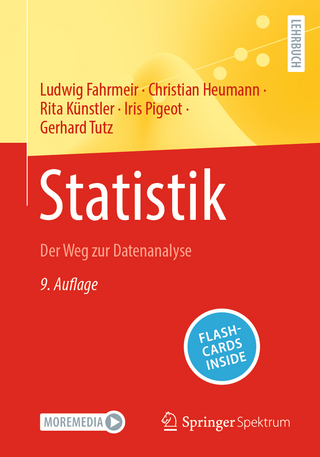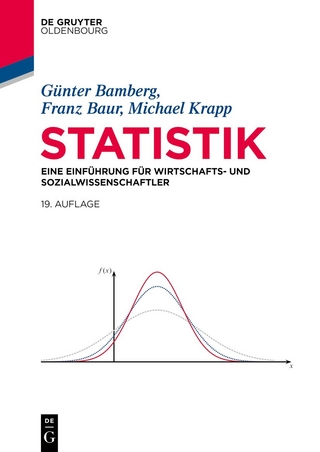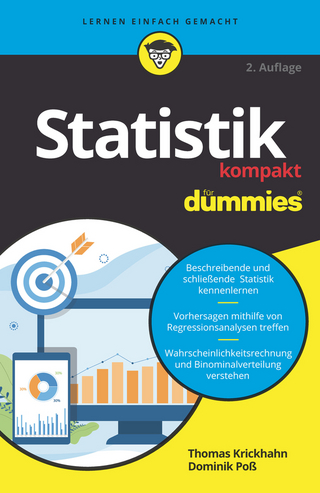
Medical Statistics for Cancer Studies
Chapman & Hall/CRC (Verlag)
978-1-032-28587-0 (ISBN)
Cancer is a dreaded disease. One in two people will be diagnosed with cancer within their lifetime. Medical Statistics for Cancer Studies shows how cancer data can be analysed in a variety of ways, covering cancer clinical trial data, epidemiological data, biological data, and genetic data. It gives some background in cancer biology and genetics, followed by detailed overviews of survival analysis, clinical trials, regression analysis, epidemiology, meta-analysis, biomarkers, and cancer informatics. It includes lots of examples using real data from the author’s many years of experience working in a cancer clinical trials unit.
Features:
A broad and accessible overview of statistical methods in cancer research
Necessary background in cancer biology and genetics
Details of statistical methodology with minimal algebra
Many examples using real data from cancer clinical trials
Appendix giving statistics revision.
Trevor F. Cox is retired from Liverpool Cancer Trials Unit, University of Liverpool, UK
1 Introduction. 1.1. About Cancer. 1.2. Cancer studies. 1.3. R Code. 2. Cancer Biology and Genetics for Non-Biologists. 2.1. Cells. 2.2. DNA, Genes, RNA and Proteins. 2.3. Cancer – DNA Gone Wrong. 2.4. Cancer Treatments. 2.5. Measuring Cancer in the Patient. 3. Survival Analysis. 3.1. The Amazing Survival Equations. 3.2. Non-parametric Estimation of Survival Curves. 3.3. Fitting Parametric Survival Curves to Data. 3.4. Comparing Two Survival Distributions. 3.5. The ESPAC4-Trial. 3.6. Comparing Two Parametric Survival Curves. 4. Designing and Running a Clinical Trial. 4.1. Types of Trials and Studies. 4.2. Clinical Trials. 5. Regression Analysis for Survival Data. 5.1. A Weibull Parametric Regression Model. 5.2. Cox Proportional Hazards Model. 5.3. Accelerated Failure Time (AFT) Models. 5.4. Proportional Odds Models. 5.5. Parametric Survival Distributions for PH and AFT Models. 5.6. Flexible Parametric Models. 6. Clinical Trials: The Statistician’s Role. 6.1. Sample Size Calculation. 6.2. Examples of Sample Size Calculations; Phases I to III. 6.3. Group Sequential Designs. 6.4. More Statistical Tasks for Clinical Trials. 7. Cancer Epidemiology. 7.1. Measuring Cancer. 7.2. Cancer Statistics for Countries. 7.3. Cohort Studies. 7.4. Case-control Studies. 7.5. Cross-sectional Studies. 7.6. Spatial Epidemiology. 8. Meta-Analysis. 8.1. How to Carry Out a Systematic Review. 8.2. Fixed Effects Model. 8.3. Random Effects Model. 8.4. Bayesian Meta-analysis. 8.5. Network Meta-analysis. 8.6. Individual Patient Data. 9. Cancer Biomarkers. 9.1. Diagnostic Biomarkers. 9.2. Prognostic Biomarkers. 9.3. Predictive Biomarkers for Pancreatic Cancer. 9.4. Biomarker Trial Design. 10. Cancer Informatics. 10.1. Producing Genetic Data. 10.2. Analysis of Microarray Data. 10.3. Pre-processing NGS Data. 10.4. TCGA-KIRC: Renal Clear Cell Carcinoma.
| Erscheinungsdatum | 15.06.2022 |
|---|---|
| Reihe/Serie | Chapman & Hall/CRC Biostatistics Series |
| Zusatzinfo | 71 Tables, black and white; 123 Line drawings, black and white; 123 Illustrations, black and white |
| Sprache | englisch |
| Maße | 156 x 234 mm |
| Gewicht | 616 g |
| Themenwelt | Mathematik / Informatik ► Mathematik ► Statistik |
| Medizin / Pharmazie ► Medizinische Fachgebiete ► Onkologie | |
| ISBN-10 | 1-032-28587-7 / 1032285877 |
| ISBN-13 | 978-1-032-28587-0 / 9781032285870 |
| Zustand | Neuware |
| Informationen gemäß Produktsicherheitsverordnung (GPSR) | |
| Haben Sie eine Frage zum Produkt? |
aus dem Bereich


